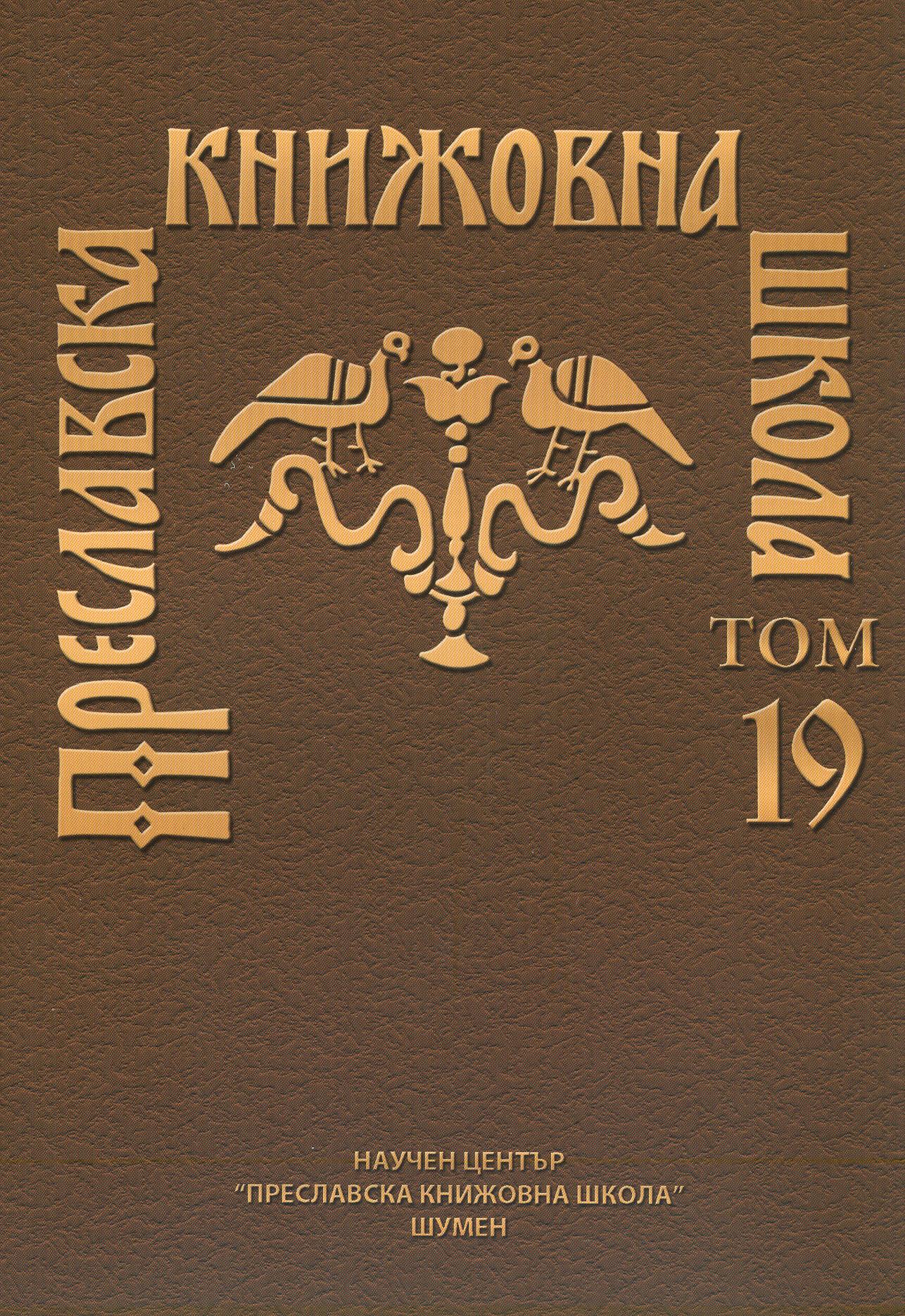БАЛКАНИЗМИ В СТАРОБЪЛГАРСКИЯ ПРЕВОД НА КАТЕХИЗИСА
НА СВЕТИ КИРИЛ ЙЕРУСАЛИМСКИ (ГИМ, Син. 478)
BALKANISMS IN THE OLD BULGARIAN TRANSLATION OF ST. CYRIL OF JERUSALEM’S CATHECHISM (GIM, Syn. 478)
Subject(s): Language studies, Language and Literature Studies, Eastern Slavic Languages, PhilologyPublished by: Шуменски университет »Епископ Константин Преславски«
Keywords: Old Bulgarian literary language; Bishop Konstantin of Preslav; St. Cyril of Jerusalem’s Cathechism; Balkanisms; analytical future tense; possessive dative; postpositive demonstrative pronoun; да-sente
Summary/Abstract: The presented examples of the studied manuscript demonstrate an established norm in terms of the formal construction and functions of the so-called Balkanisms in the structure of Old Bulgarian literary language. Both in the classical Old Bulgarian manuscripts and in Sin 478 the synonymity of several means of expressing futures is fixed in the descriptive (analytical) future tense, with a tendency to grammatize constructions with имѣти and хотѣти. With regard to the possessive dative Sin478 relates to the peculiarities of classical Old Bulgarian monuments regarding/in view of the semantic and syntactically-functional transformation of the free dative into a possessive dative, especially when using postpositive dative pronouns (д͠шю си, имѧ ѥмѹ, лице ѥмѹ), when forming Syntagma S1 + S2DatSympl / S1 + S2DatAdn (ср͠дце чл͠вкѹ, ср͠дце чл͠вкѹ ти, очи ц͠ремь, очеса имъ, начальникъ ѹбииствѹ, начальникь грѣхѹ, рабы правьдѣ, ѹчитель чистотѣ, творьць/съдѣтель н͠бѹ и земли, отьданиѥ грѣхомъ),when using the dative form имъ in the case of the reflexive possessive pronoun свои and in the generalizing pronoun вьсь (своихь имъ блѧдии, своихъ имъ баснословесии, вьсѣмъ имъ имена), when the pleonastic use of the enclitic dative form си of its recurrent personal pronoun in its full form свои. For constructions with a postpositive demonstrative pronoun in the examples of the syntagmatic model Noun + сь + Adjective the indicative pronoun may express a more general definiteness; in conjunction with the indicative pronoun тъ for a Greek article and and εκεινοmore can be said of articulate forms in direct indication (рогъ тъ, храмъ тъ, жрьтвѣ тои) or in case of difference in the word order according to the Greek equivalents (льсть та, ц͠рь тъ, пр͠ркъ тъ), and the syntagmatic model of Adjective + онъ (for Greek εκεινο) + Noun, characterized by the weakening of the deictic meaning, is an indicator for the construction of a specific formal-syntactic model of the name group. In да-sentences the whole palette of subordinate sentences for purpose illustrates the syntactic norm established by the subordinate (final and objective) conjunction да as a formal equivalent for translating the functions and meaning of the final and object uses of the Greek conjunction †na, as well as the infinitive constructions of finite and objective meaning which are specific for Greek syntax. In general, it is concluded that, with regard to Balkanism, the translation of the St. Cyril of Jerusalem’s Cathechism reflects a norm characteristic of manuscripts created in the Bulgarian linguistic environment, and more precisely – in the Preslav Literary Center. This indicates that the antigraph of Sin478 is related to the work of a prominent writer of Simeon’s circle. As for the scribe's ideolect, the manuscripts are additionally significant, as in the six examples of the self-use of a L-participle implementing a new semantic-grammatical function of the L-participle – the renational attitude of the speaker to the verb action in a narrative context, as well as by the five examples of the formation of prohibitive structures with imperative form не мози / не мозѣмъ + infinitive of the main verb expressing a mitigated negative command. In this way, the complex examination of the Balkanisms and the new (folk-speaking) morpho-syntactic isoglosses in Sin478 allows the translation of the St. Cyril of Jerusalem’s Cathechism to be even more closely related to the literary practice and style of the most prominent representative of the so-called ”two-Ъ” Preslav’s School – Bishop Konstantin of Preslav.
Journal: Преславска книжовна школа
- Issue Year: 2019
- Issue No: 19
- Page Range: 122-167
- Page Count: 46
- Language: Bulgarian

